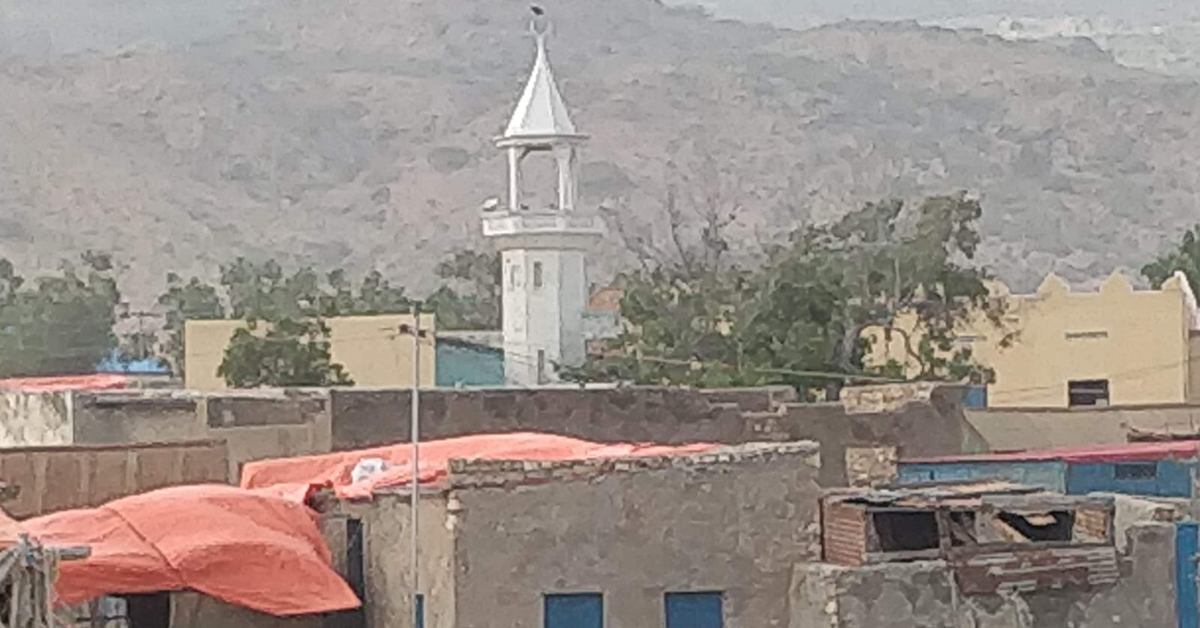. . The impact of consecutive rain failures is already fierce, producing widespread livestock losses and displacement as well as loss of human life. Its end is not clear as forecasts for the next rainy season are not encouraging. We have already been raising attention to this issue as it affects Somalia.
This blog draws attention to this unfolding crisis in the Somali Region State of Ethiopia (SRS) raising two main concerns: that the current drought in this area is not getting sufficient attention and support from both the Ethiopian Government and international actors who are focused elsewhere and that increasing political unrest within the SRS is distracting from attention on the drought.
After a long history of violence and state-based oppression, the SRS has been relatively calm and peaceful, since a change of leadership in 2018. However, mass starvation is a real concern for people in the region. If this was to happen in this unprecedented period of relative calm it would be a tragic dereliction of leadership.
Background
The SRS comprises a vast territorial expanse in southern Ethiopia, the second largest region in the country in terms of geographic area. It is largely a pastoral community, economically linked to Somalia and Somaliland, through the export of livestock to the Gulf, and the importation of food and other goods through the same channels.
The region has a history of both conflict and severe food insecurity. In 2002, Professor Stephen Devereux argued that the Ethiopian Government and International community had failed to stop a famine in the region. One of the results of this failure was considerable support to the development of government run disaster preparedness, including early warning systems and improved food security analysis in the region. While these technical developments were important and led to a more sophisticated understanding of the economy, local livelihoods and vulnerability within the region, the identification of ‘needs’ – as across all of Ethiopia – was always strongly controlled by political interests, at regional and federal levels.
The SRS has a long history of state-sponsored violence and oppression which have often been entangled with the dynamics of food insecurity and famine. The most recent iteration of this violent history was the decade long rule of Abdi Mohamed Omar ‘Iley’, initially a stooge of the ruling Ethiopian People’s Revolutionary Democratic Front (EPRDF), which was dominated by the Tigray People’s Liberation Front (TPLF), but who later became a strongman in his own right, able to form powerful alliances with prominent actors within the ruling regime, through the use of money and violence. Ironically, in 2010/11, when Somalia faced a harsh drought and famine, the SRS government, under ex-President Abdi Iley, drew praise for a significant emergency water intervention throughout the region. This success came early in Abdi Iley’s reign which later turned increasingly violent and oppressive until his overthrow in 2018.
Abdi Iley was removed from power by current Ethiopian Prime Minister, Abiy Ahmed, leading to the installation of Mustafa Omer as the Regional President, in August 2018. Iley’s removal and Omer’s arrival initially heralded a transformation across all areas of society and economy. It was an enormous relief for a population many of whom had been living in fear. However, expectations around this change of leadership were enormous and are yet to be fully realised.
Current situation
The current rainfall failure is widespread across the SRS, although is considered worst in the further reaches of the region, such as Afder and Liben zones.
For example, a businessman we spoke to stated that ‘I have a truck working in Afder. Things are much worse there and people are suffering in silence. Korahe people have support from diaspora and government as well as the have influence. Water is three times more expensive in Chereti in Afder than in Korahe because of availability of trucks. What I fear is mass death in those areas.
These differences in people’s access to assistance reflect patterns we also have seen in Somalia, where populations who have limited political influence and diaspora connections, as well as geographic distance from the capital, face higher risks of drought and ultimately famine. The SRS has a significant diaspora population, many of whom became part of Somalia’s migration processes. As in Somalia, diaspora populations are unequally distributed across society, with diaspora resources primarily circulating within clan-based social networks. Fund-raising is taking place within these networks, in order to fund localised water-trucking.
Many locally organised efforts are taking place. Another businessman told us the following:
“I received a call from a woman in a nomadic camp in an area that I knew had no roads and is surrounded by jungles and mountains. The woman told me that no one in the camp had food or water in three days and the deaths will start today if no help reaches them and she didn’t know anyone else to turn to. I recognised her as the wife of one of the wealthiest men in the region, but she explained that all their livestock are dead and they ran out of food. I asked her to send some of the men in the camp to the nearest village or town where there is authority that could help. She replied that none of the men was strong enough to make it to the next settlement. I had to look for the nearest truck and persuade them to take water to that camp, which was a struggle because of the difficult terrain surrounding the area”.
We heard many similar stories, particularly from the Afder and Liben zones.
Another indication of the gravity of the situation is that the prominent Somali religious leader, Sheikh Umal, who is based in Nairobi, Kenya, has recently travelled to the SRS and has been emphasising the gravity of the situation and the importance of supporting those most in need. Umal is a prominent leader throughout the Somali speaking world and his mosque has been an important hub for resource mobilisation in times of disaster.
One of the author’s of this blog, who travelled to Somali region recently, observed that assessments by humanitarian organisations are concentrated to the east of the Shabelle river, reflecting the neglect of Afder and Liben zones further west, which have poorer infrastructure and are far from the capital, Jijiga.
Humanitarian Focus on the north
The focus of humanitarian actors in Ethiopia for the last year has been on the north of the country, most notably Tigray, but also parts of Amhara region and more recently Afar. The humanitarian disasters in the north are almost entirely the result of conflict and reflect the profound transformation in state and society that is reverberating through many parts of the country.
The international community at large is struggling to fully comprehend and respond to these changes and in particular the enormous suffering that has and continues to take place.
An Uneasy Calm in Somali Region
Ironically, where the SRS has historically been associated with violence and oppression, ever since the ousting of Abdi Iley, and even with the increasing instability and conflict in other parts of the country, the region has remained largely stable and free of conflict. Nevertheless the legacy and trauma of the past remains present and unaddressed. However, this general picture of relative stability and security is threatened by recent political developments as well as the pressure brought by the drought itself.
The President of SRS, Mustafa Omer, has a food security and humanitarian background himself, having worked for the regional early warning system previously (when with Save the Children) as well as later for UN OCHA in Zimbabwe and Somalia. Efforts have been made by the Regional Government to attract attention to the drought and crisis. PM Abiy Ahmed himself visited Jijiga, the capital, in January this year and reportedly raised attention to the drought. Public resources have been mobilised but there are grave concerns that aid is not reaching the most needy.
The scale of the drought and the humanitarian needs it is generating are however far beyond the capacity of the government to address. Worryingly, increasing tensions have been developing between Omer and opposition groups. In addition, in early February, the Prosperity Party, which Omer leads has split. These tensions reflect wider political instability in the country which draw attention away from the drought itself.
Conclusion – focus on the drought and maintenance of stability
Ethiopia is undergoing cataclysmic changes to its underlying political economy. There is conflict and deep political animosity in many parts of the country. Somali Region and its people have been insulated to a large extent from these changes and certainly from the violence that is taking place in northern and western Ethiopia. This is somewhat of a reversal of the historical pattern where the region’s people have been subject to violence and subjugation in many periods of the distant and recent past. The changes taking place within Ethiopia offer an opportunity for Somali region’s leadership and people to shape a future that reflects their own aspirations within the country rather than reflects the security concerns of the centre.
At this point in time however, an increased urgency is required of international actors (including Western countries as well as others from the Gulf and Turkey who are active in the Horn of Africa), along with Federal and Regional governments, in order to avert the potential for mass starvation. This requires leadership and collaboration. It requires the more distant areas – from the regional capital – to be prioritised. It requires a greater sense of urgency and the possibility of providing support from organisations in neighbouring areas of Somalia, Somaliland and Kenya (such as through cross-border programmes).
It would be a tragic failure if, in these relatively calmer times in the SRS, the people were left unsupported.





